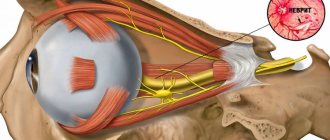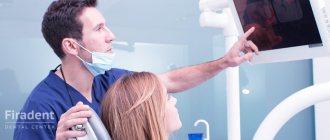- home
- Helpful information
- Analyzes and examinations
- Types of instrumental examinations
Instrumental diagnostic methods are used for routine and preventive examinations, to identify diseases, to control their course, and to evaluate the effectiveness of therapy.
For them, special equipment is used, which allows you to assess the condition or operation of a particular organ or system. Medical uses the following types of instrumental examinations in diagnosis. Sign up for a consultation
Radiography and fluoroscopy
In radiography, X-ray beams are passed through to produce a two-dimensional image of organs and tissues. Images are formed due to differences in the ability of different tissues to absorb radiation. The study is used mainly in traumatology, orthopedics, and to assess the condition of the skeleton.
Fluoroscopy also uses x-rays, but with its help, not individual images are taken, but long-term shooting. Used to visualize heart rate, intestinal motility, passage of an injected contrast agent through the esophagus, etc. Fluoroscopy is rarely used due to the relatively high doses of x-ray radiation. If possible, ultrasound or other research methods are used instead.
Ultrasonography
Performed using an ultrasound machine. The equipment registers the reflection and passage of ultrasonic waves, which makes it possible to obtain an image of an organ, evaluate the structure of tissues, their density, identify structural changes, etc. Ultrasound is widely used in diagnostics to assess the condition of internal organs. The study provides a large amount of information, allows you to prescribe an optimal treatment plan or adjust previously proposed therapy. It is used to study the abdominal organs, thyroid gland, genitourinary system, etc. The procedure is painless, non-invasive and takes a few minutes. It is safe and can be performed an unlimited number of times.
Indications for examination
Laboratory diagnostics are always used, regardless of the type of diseases and disorders in the body. However, tests are prescribed individually in each case, based on the purpose of the examination.
General clinical. They have a wide range of applications. Prescribed for diagnosing diseases, during various medical examinations, examinations before operations.
Biochemical. They are carried out to identify disturbances in the functioning of internal organs and metabolic processes, as well as to assess the degree of their severity.
Hormonal. They are carried out for endocrine pathologies, menstrual irregularities, infertility, erectile dysfunction, obesity, hair loss, skin problems.
Immunological. Indicated for autoimmune diseases, the development of oncological processes, chronic infections, allergic reactions, as well as during preparation for surgery and internal organ transplantation.
Genetic. They are carried out to assess the state of the reproductive system, determine the Rh factor, study hereditary immunity factors, and blood clotting indicators. The examination is relevant if there is a risk of “inheritance” of serious illnesses affecting the nervous, digestive, and cardiovascular systems, including alcohol and drug addiction.
Infectious. The biomaterial is studied to identify any infections and viruses, for example, herpes, rubella, rotavirus. This includes sexually transmitted diseases.
Important! The objects of research are blood, the contents of cavities and infiltrates, physiological secretions (saliva, sputum, feces, sperm), tissue samples of various organs, nail plates, and hair.
Electrocardiography
Amplification and recording of electrical impulses of the heart. After registration, data on the characteristics of these pulses are transferred to paper in the form of a group of broken curves. Each of them characterizes the activity of a particular department or structure of the heart. Used to detect heart rhythm disturbances, problems with blood supply to the heart, complications after a heart attack, etc. The study is painless; during it, several sensors are attached to the patient’s chest, arms, and legs. The procedure takes a few minutes. It is possible to conduct a daily ECG (extended examination during the day), take an ECG under load or after taking certain medications.
The methodological development is addressed to a wide range of speech pathologists, speech therapists in school, preschool and medical institutions.
Methodological development is addressed to a wide circle of specialists-defectologists, logo-fag pre-school and medical institutions.
A timely, complete, comprehensive examination of a child with disabilities in intellectual and speech development is necessary to determine an individual educational route, select methods and technologies of developmental education, predict development, and develop the necessary recommendations for parents.
The diagnostic work of a speech therapist-defectologist at the dispensary department of the Children's Psychiatry Center for Mental Health has certain specifics associated with the large number of examined children with various impairments of intelligence, oral and written speech, mental disorders, and behavioral disorders. The next feature of the diagnostic work of a CVL specialist is the examination of children of different ages (from 2 to 18 years) and the availability of a minimum amount of time to carry it out. In connection with these factors, a speech therapist-defectologist must use a variety of diagnostic tools in his work, as well as apply the principles of a multi-level and differentiated approach in diagnosing children, which help to skillfully determine the level of their intellectual, mental and speech development.
DIAGNOSTIC TOOLS USED TO DETERMINE THE MENTAL STATUS OF CHILDREN
Zabramnaya S.D. Borovik O.V. Practical material for conducting psychological and pedagogical examination of children. Moscow, publishing house 2003. Diagnostic kit “Study of the developmental features of the cognitive sphere of children of preschool and primary school age.” Comp. Semago N.Ya., Semago M.M. Moscow, "ARKTI", 2000. Mishina G.A. Razenkova Yu.A. Strebeleva E.A. Psychological and pedagogical diagnostics of the development of children of early and preschool age. Toolkit. Appendix “Visual material for examining children” (edited by Strebeleva E.A.) Moscow, “Education”, 2007. Peresleni L.I. Psychodiagnostic complex of methods for determining the level of development of cognitive activity of primary schoolchildren. Moscow, “Iris-Press”, 2006. Set of practical materials “Lily”. Methodological recommendations for using the set of practical materials “Lily”. Usanova O.N. Moscow, NPC "Correction", 1994. N.L. Belopolskaya Kogiton. Psychodiagnostic kit. Moscow, “Cogito-Center”, 2005. For a comprehensive and comprehensive examination of children of different ages and levels of development, determining their mental status within a minimum amount of time, it is preferable to use practical material for conducting a psychological and pedagogical examination of children (Zabramnaya S.D. , Borovik O.V.), which makes it possible to identify the development of learning skills, general awareness and social and everyday orientation, the level of knowledge and ideas about the environment, the formation of voluntary activity, the state of cognitive functions, the emotional-volitional sphere, the motor sphere (especially fine motor skills of the hands), adequacy of behavior.
In cases where the child being examined is of preschool age or there is no opportunity to establish contact using other means, if there is a severe degree of mental retardation or if speech, hearing or other analyzer impairments are noted, it is convenient to use part of the game diagnostic material (pyramid, mat-reshka, “mailbox”), with the help of which the coordination of movements, the state of fine motor skills, the leading hand, the degree of formation of ideas about size, shape and color, the ability to compare according to these characteristics, the adequacy and rationality of actions are studied , the presence and persistence of interests, learning ability, as well as features of gaming activity, the ability to navigate in space, performance and attitude towards successes and failures.
The examination using tables is carried out taking into account the individual characteristics of children and taking into account the focus on studying a particular mental process (perception, thinking, memory) or the level of school knowledge. The use of these tables helps to establish the causes of learning difficulties and the nature of existing developmental deviations. For example, when studying the process of perception, individual characteristics of the perception of color, shape, size, spatial relationships, visual-motor coordination, and the formation of visual-effective and visual-figurative thinking are noted. As a result of the study of the attention process, such features as observation, concentration, stability, switchability, distribution and volume of attention of the examined child are noted. When studying memory, it is important to note the state of the child’s visual, auditory, and logical memory. Of particular importance in determining mental status is the study of the individual characteristics of the child’s thinking process: understanding pictures with hidden meanings, establishing cause-and-effect relationships, perceiving and understanding pictures depicting absurd situations, comprehending a series of plot pictures, the ability to generalize, compare, classify, exclusion, establishment of patterns, features of verbal and logical thinking. In addition, practical material makes it possible to study the child’s level of learning, the measures of necessary assistance, the stock and accuracy of ideas about the world around him, as well as to study the emotional-volitional sphere and the personality as a whole, the formation of moral qualities of the individual and behavior.
The use of tables to study school knowledge and skills is necessary to determine the further individual educational route of the subject, as well as to determine the reasons causing difficulties in mastering educational material (state of physical development (decreased vision, hearing, immaturity of motor skills, nervous system disorders) or discrepancy between school requirements and the child’s intellectual capabilities.With the help of the tables and assignments in the main academic subjects proposed in the practical material, one can judge what is the most difficult for the child, which operations are not formed, which helps determine the compliance of the level of knowledge with the requirements of the program of a given school. So, for example, when studying educational knowledge in mathematics, it is necessary to identify the maturity of the concept of number, proficiency in counting operations, level of proficiency in forward and backward counting, knowledge of geometric figures, knowledge of the multiplication table, knowledge of the names of components and results of arithmetic operations, proficiency in analytical activities when solving tasks. When studying reading and writing skills, the ability to generalize the perception of letters is revealed, the level of reading technique and comprehension of what is read is established, and it is also determined at what stages of learning to write the child has difficulties and what causes them. For this purpose, the subject is offered tasks for copying letters, syllables, words, phrases from handwritten and printed text, and writing from dictation.
Thus, the use of “Practical material for conducting psychological and pedagogical examination of children” (Zabramnaya S.D. Borovik O.V.) as a diagnostic tool helps in determining the mental status of children of different ages and allows the use of the principles of a multi-level and differentiated approach in the diagnosis of children.
The diagnostic kit “Study of the characteristics of the cognitive sphere of children of preschool and primary school age” (Semago N.Ya., Semago M.M.) includes both classical developments and proprietary methods used in in-depth psychological diagnostics of children. The sequence of use of materials proposed in the technology is, according to the authors, optimal.
These techniques are successfully used when conducting psychodiagnostic examinations to determine the level of mental and intellectual development of the child being examined.
Another effective link in the diagnostic tools of a speech therapist-defectologist is the methodological manual and visual material by Mishina G.A., Razenkova Yu.A., Strebeleva E.A. “Psychological and pedagogical diagnostics of the development of children of early and preschool age”, created on the basis of a modern approach to diagnosing the mental development of examined children (2-7 years old) and including a description of methods aimed at identifying the level of cognitive and speech development, examining the hearing of speaking and non-speaking children various age categories.
The authors focus on early diagnosis of cognitive disorders, which is extremely difficult, but also extremely necessary, as it prevents the appearance of secondary developmental disorders and allows for more successful and timely compensation for these disorders.
The manual offers a set of techniques that allow you to monitor the progress of children’s mental development and promptly identify unfavorable factors that influence the formation of their psyche. This approach is aimed at correcting cognitive activity, personal qualities and readiness for school education.
The specific tasks of the psychological and pedagogical examination formulated by the authors are extremely important in practical work.
In addition, modern diagnosis of developmental disorders in children, according to the authors, should take into account a number of principles.
Universal diagnostic tools made from environmentally friendly materials and meeting the requirements of SanPiN (Strebeleva E.A.) are very convenient to use in practical psychodiagnostic activities. Its configuration fully complies with the requirements of the methodology and technical specifications of the author. Despite the large number of products, diagnostic kits are very compact and lightweight. The main part of the components is made according to the principle of a prefabricated design. This allows for diagnostic examinations to be carried out both in-patient and on-site. This equipment allows you to carry out a comprehensive examination of the child and create a comprehensive program of correctional work.
A set of practical materials with methodological recommendations “Lily” (Usanova O.N.) includes methods for diagnosing mental development disorders in children (study of visual-effective, visual-figurative and verbal-logical thinking, study of impressive and expressive speech, study of visual perception and counting operations ). Of course, this kit is mostly addressed to psychologists, but it can also be used in the process of determining mental status by defectologists.
Psychodiagnostic kits (N. L. Belopolskaya Kogiton) “Cogitosha” (for examining preschool children) and “Cogiton” (for examining schoolchildren) also include tested, adapted and proven effective professional psychological techniques (motivation diagnostic test, standard progressive Raven's matrices, a method for studying voluntary memorization, a method for studying categorical thinking, a method for studying understanding the meaning of short stories, a verbal test of creative thinking, as well as an express method for testing reading, counting and writing skills when entering school).
Thus, these diagnostic kits allow the use of the principles of a multi-level and differentiated approach in the diagnosis of children and can be successfully used as diagnostic tools by speech therapists and speech pathologists at the Children's Psychiatry Center.
DIAGNOSTIC TOOLS USED TO DETERMINE CHILDREN'S SPEECH STATUS
Bessonova T.P. Gribova O.E. "Didactic material for examining children's speech." Moscow, 1997. Bolshakova S.E. “Speech therapy examination of a child”, Moscow, APO, 1995. Borisenko M.G., Lukina N.A. "Diagnostics of child development." Practical guide to testing. 0 – 3 years. “Parity”, 2006. Vinarskaya E.N. “Early speech development of a child and problems of defectology.” Moscow, “Prosveshchenie”, 1987. Differential diagnosis of speech disorders in preschool and school-age children.” Guidelines. St. Petersburg, publishing house RGPU im. A.I. Herzen, 1998. Inshakova O.B. Album for a speech therapist. “Correctional pedagogy”, Moscow, “Vlados”, 1998. Konenkova I.D. “Speech examination of preschool children with mental retardation.” Moscow, 2004. Lavrova G.N., Rychkova L.S. “Diagnostic album for examining children under 2 years old.” Chelyabinsk, 2000. . Lavrova G.N., Rychkova L.S. “Differential diagnosis of the level of mental development of children 2–7 years of age.” Chelyabinsk, 2001. Sadovnikova I.N. “Writing speech disorders and their overcoming in younger schoolchildren.” Moscow, “Vlados”, 1997. Smirnova I.A. “Speech therapy album for examining sound pronunciation.” Visual and methodological guide. St. Petersburg, “Childhood-press”, 2004. Smirnova I.A. “Speech therapy album for examining the ability to read and write.” St. Petersburg, “Childhood-press”, 2007. The main link in the diagnostic activity of a speech pathologist-defectologist is to determine the speech status of the examined child, namely, to determine the presence of speech pathology, its structure and degree of severity against the background of mental disorders. The result of this stage of the diagnostic examination is a speech therapy report and recommendations, which are recorded in the medical record. To develop a further optimal educational route, close contact is carried out with a psychiatrist and psychologist.
Due to the fact that the majority of children seeking help from CVL specialists are children with mental retardation, such diagnostic material as “Examination” can be successfully used as a diagnostic tool when determining their speech status. speech of preschool children with mental retardation” (Konenkova I.D.).
When developing a technology for examining preschool children with mental retardation aged 4–7 years, the author relied on the “educational experiment” method known in pathopsychology (A. Ya. Ivanova, 1976; I. Yu. Levchenko, 2000).
An examination of a child’s speech activity is carried out in compliance with a certain sequence of stages and includes an analysis of the main components of the speech functional system. For each task, instructions are given in which the child is shown an approximate result of the speech activity ahead of him and a way to achieve this result, that is, a sample. This provides an expansion of the orientation part, which is important for children with mental retardation. If there is a difficulty, the child receives help in the form of motivating or clarifying questions, context clues, repetition of instructions, and analysis of a sample.
Convenient when summing up the diagnostic results are the criteria developed by the author for assessing the results of the examination, reflecting the correctness of the task and the features of the process of completing the task (acceptance and understanding of instructions, acceptance and use of help, the ability to correct errors).
Taking into account the characteristics of the cognitive activity of children with mental retardation (reduced cognitive activity, peculiarities of perception, attention), the examination uses a variety of methods that encourage cognitive activity and stimulate concentration (didactic games, exercises, visual material: pictures, toys, diagrams) .
A significant difficulty in the work of a speech pathologist-defectologist is the diagnosis of speech disorders in children 2–3 years of age. In such cases, as a diagnostic tool, you can successfully use the material recommended by the Russian Academy of Education “Speech therapy examination of a child” (S. E. Bolshova). The author notes that the design and content of the examination can and should vary depending on the purpose of the examination, and no scheme can provide for all questions that may arise during the diagnostic process. One cannot but agree with this. Of course, it is possible to highlight only the main directions of the examination and those of its stages, without which an idea of the child’s level of development will not be complete.
In addition, S.E. Bolshova focuses on the fact that the level of development of children with organic brain lesions of different etiologies can vary significantly in each age group. Systemogenesis is also impaired in them, therefore, when developing an examination technique, it is impossible to foresee the degree of underdevelopment of a particular function.
In each specific case, methods designed to examine various functions in younger children can and should be used. The survey methodology, however, should be limited and designed for a specific age category.
The author proposes the basis of the methodology for speech therapy examination in the form of schemes for a speech therapy examination of a child 3–6 years old and an examination of a child 2–3 years old, which makes it possible to diagnose delayed speech (as well as intellectual) development at an early stage.
The next distinctive feature of this material is that it is accompanied by a diagram of the systemic development of normal child speech. Based on this chart-table, it is convenient to assess the compliance of a child’s speech development with the age norm, as well as determine the level of speech underdevelopment.
Very convenient for diagnosing a child’s speech development is the “Album for a Speech Therapist” (Inshakova O.B.), which includes illustrative material for conducting an individual examination of the oral speech of children of senior preschool and primary school age (6 – 9 years old).
The use of this material makes it possible to determine the speech status of the child being examined within a minimum amount of time, taking into account traditional examination techniques in speech therapy and the principle of sequential transition from simple to complex.
If it is necessary to conduct a more in-depth examination of the vocabulary and grammatical structure of speech, as well as an examination of reading and writing skills, “Didactic material for examining the speech of children” (Bessonova T.P., Gribova O.) can be used as a diagnostic tool .E.), addressed to defectologists in preschool, school and medical institutions.
An in-depth examination of vocabulary is carried out only in cases where, during a preliminary conversation with the child, the lexical and grammatical side of speech or complaints about its manifestations from the words of the parents are revealed.
A distinctive feature of the language material is its distribution into three groups depending on the level of its linguistic complexity and the timing of its appearance in children’s speech.
It should be noted that levels A, B and C, which include verbal material of varying degrees of complexity, do not directly correspond to the levels of speech development in OHP according to R.E. Levina.
The advantage of this diagnostic material, which includes systematized language material according to difficulty levels within each type of task, is that it allows a specialist to examine children of the widest age spectrum with varying degrees of severity of speech pathology and to develop language and speech skills and skills based on adequate material in the context of systematic individual lessons.
When analyzing the structure of the speech defect of the child under examination, an essential point is to determine the level of proficiency in complex grammatical units and structures.
During the testing process, first, tasks are offered aimed at studying the state of the grammatical structure of active speech, and in the absence of certain grammatical units in independent speech, tasks to understand them.
Also, the use of the same type of grammatical material allows a specialist to identify a child’s ability to learn linguistic phenomena, that is, the presence of a so-called “sense of language,” which serves as an additional parameter in the functional diagnosis of borderline disorders.
“Didactic material for examining the speech of children” (Bessonova T.P., Gribova O.E.) can also be successfully used when examining the reading and writing skills of children with disabilities in the development of learning skills.
A preliminary idea of the level of development of writing skills and the nature of errors can be obtained by looking through the student’s school notebooks and analyzing the nature and frequency of mistakes made.
Thus, during the diagnostic examination, the child’s level of readiness for learning to read and write or the degree of mastery of various types of reading and writing is revealed. In this regard, two parameters stand out:
The technical side is the state of the motor skill of writing; pace of reading and writing; correct reading of material of varying degrees of complexity; the ability to record oral speech in writing. The qualitative side is comprehension of what is being read; the opportunity to embody your idea in writing, grammatically and lexically formalize your oral statement into writing in accordance with the laws of the literary language. The “Speech therapy album for examining the ability to read and write” (Smirnova I.A.) can also be successfully used as a tool for diagnosing dyslexia, dysgraphia, as well as determining readiness for learning to read and write. With the help of visual material presented in the album, the formation of mental functions that ensure the acquisition of reading and writing skills is revealed. This material also allows you to assess your knowledge of printed and handwritten letters, the correctness of reading and writing, and the level of reading comprehension.
A comprehensive study of the state of written speech can be successfully carried out using the diagnostic material proposed by I.N. Sadovnikova (“Writing speech disorders and their overcoming in younger schoolchildren”). The proposed system for recording errors is based on the classification of specific writing errors, which takes into account pathogenetic mechanisms even with the external similarity of some symptoms of dysgraphia. The table “Accounting for specific writing errors” is very convenient when recording the results of the examination, reflecting the nature and frequency of specific errors, which, in turn, allows you to competently plan further correctional work. The table also includes errors that are symptoms of evolutionary dysgraphia (which is a manifestation of children’s natural difficulties during initial learning to write, which is associated with the complexity of this type of activity). These types of errors (two ways of indicating soft consonants in writing, fused spelling of words, mirror spelling of letters...), being symptoms of evolutionary dysgraphia (immaturity of writing skills), also require speech therapy assistance.
The proposed diagnostic material makes it possible to determine the degree of mastery of writing skills, taking into account the stage of training and the requirements of the school curriculum at the time of the examination, as well as to identify existing writing disorders (the nature and severity of specific errors).
A particularly significant link in the diagnostic tools of a speech therapist-defectologist is the methodological recommendations “Differential diagnosis of speech disorders in children of preschool and school age” (authors’ team of the A.I. Herzen Russian State Pedagogical University), including cards for a comprehensive, comprehensive, in-depth examination of children with various types of speech disorders. speech and intellectual disorders:
Author of methodological recommendations for speech therapy diagnostics R.I. Lalaeva notes that, when summing up the results of a diagnostic examination and formulating a speech therapy conclusion, a speech pathologist-defectologist must take into account two criteria for speech therapy diagnosis: symptomological and clinical-pedagogical. In her opinion, speech therapy diagnostics, which sets itself correctional and developmental tasks, should be considered within the framework of the existing classifications in speech therapy (psychological-pedagogical and clinical-pedagogical), and the speech therapy conclusion should take into account the intersection of these two classifications. When formulating a speech therapy report, it is also advisable to take into account the stages of the examination: from determining the symptoms of speech disorders, identifying impaired components to clarifying the mechanisms and structure of the speech defect (i.e., the form of speech disorders).
In addition, the publication provides options for the intersection of two classifications and approximate wording of a speech therapy report when examining preschoolers with normal intelligence, preschoolers with mental retardation, schoolchildren with normal intelligence, with mental retardation and with mental retardation, which makes these guidelines very valuable in practical diagnostic activities speech therapist-speech pathologist in the structure of the Center for Children's Psychiatry.
In the list of diagnostic tools of a speech therapist-defectologist at the Children's Psychiatry Center, of course, a special place is also occupied by the “Methodology of psychological and speech therapy examination of children with speech disorders. Issues of differential diagnosis" (Training manual, Volkova G.A.), which proposes that when analyzing a speech disorder, consider it as a complex, multi-level functional system, the components of which (phonetic, lexical, grammatical aspects of speech, phonemic processes, semantics) depend on one from the other and condition each other. A description of specific examination methods and analysis of the data obtained are presented in this manual, taking into account the fact that the primary immaturity in a child of one of the language components involved in the development of speech entails changes in the entire speech system. Psychological and pedagogical analysis of the structure of speech defects makes it possible to identify the peculiarities of the interaction of non-speech and speech deviations in each case.
The educational manual presents examination schemes for children with various speech pathologies.
The materials presented in the manual for examining children with various speech disorders, as well as information about the formation of a number of mental functions in the early stages of ontogenesis, contribute to the quality of diagnosis of speech disorders and help to implement a differentiated approach in subsequent correctional education.
The sections presented in the manual are of particular importance in diagnostic activities:
Formulation of a speech therapy report. Psychological and pedagogical classification of speech disorders. A multi-level speech therapy report that takes into account three aspects of the classification of speech disorders: the medical aspect (offers taking into account which of the speech analyzers is impaired (speech-motor or speech-auditory), in which department there is a disorder (central or peripheral), what is the degree of impairment (functional or organic) disorder), time of onset of the disorder (before the onset of speech formation, during the process or after speech has already been formed); speech therapy aspect (involves taking into account which part of the speech system is disturbed: disturbances of the voice, rhythm, tempo of speech, phonetic , phonemic, lexical, grammatical, semantic structure of speech): psychological aspect (involves taking into account the extent to which the communicative function of speech is impaired, what personal deviations are accompanied by this or that speech disorder, what are the tendencies of spontaneous development of the disorder, what prognosis for one or another type of speech disorder).A multi-level speech therapy conclusion is the main result of the diagnostic work of a speech pathologist-defectologist, which, based on the clinical and pedagogical classification, reflects the following:
The mechanism and form of speech impairment, i.e. the nature of deviations in the functioning of processes and operations that determine the emergence and development of speech impairments (for example, functional dyslalia: motor, sensory, sensorimotor, organic dyslalia (mechanical); dysarthria: bulbar, pseudobulbar, cortical , subcortical, cerebellar, mesencephalic-diencephalic; alalia: motor afferent, efferent, sensory, etc.; dyslexia (phonemic, optical, etc.); dysgraphia (articulatory-acoustic, acoustic, optical, agrammatic, dysgraphia based on disorders of language analysis and synthesis); stuttering (organic or functional). The structure of a speech defect, i.e. the totality of speech and non-speech symptoms of a given speech disorder and the nature of their connections. In the structure of a speech defect, a primary, leading disorder is distinguished (core ) and secondary defects, which are in a cause-and-effect relationship with the first, as well as systemic consequences.The different structure of a speech defect is reflected in a certain ratio of primary and secondary symptoms, which largely determines the specifics of further targeted speech therapy -actions. Speech symptoms (for example, violations of sound pronunciation by manifestation). State of non-speech mental functions: auditory perception, attention and memory; psychomotor skills, optical-spatial representations, non-verbal intelligence, emotional-volitional sphere, behavioral characteristics, play activity (in preschool children). Scope of violation. The formulations of a multi-level speech therapy report for various types of speech pathology given by the author of the educational manual are very useful and significant in the daily diagnostic work of a speech therapist-defectologist at the Center for Children's Psychiatry. The issues of differential diagnosis covered by the author are especially relevant and important.
Thus, the use of this diagnostic tool and the principles of a multi-level and differentiated approach in diagnosing children makes it possible to make the process of examining children with various intellectual and speech disorders more effective and efficient.
Glossary of terms
Alalia (from the Greek a - negative particle and laliá - speech), absence or limitation of speech in children due to underdevelopment or damage to the speech zones of the cerebral hemispheres of the cerebral cortex.
Dysarthria (from the Greek dys - a prefix meaning difficulty, disturbance, and arthróo - dismember, make articulate sounds), a disorder of articulate speech, expressed by difficult or distorted pronunciation of individual words...
Dyslalia is a violation of sound pronunciation with normal hearing and intact innervation of the articulatory apparatus.
Mental retardation (abbr. DPR) is a violation of the normal pace of mental development, when certain mental functions (memory, attention, thinking, emotional-volitional sphere) lag behind in their development the accepted psychological norms for a given age.
General speech underdevelopment (GSD) is a variety of complex speech disorders in which the formation of all components of the speech system is disrupted, that is, the sound side (phonetics) and the semantic side (vocabulary, grammar).
Oligophrenia is a persistent, irreversible underdevelopment of the level of mental, primarily intellectual, activity associated with congenital or acquired (dementia) organic pathology of the brain.
Glossary of terms
Alalia- (from Greek and - negative particle and laliá - speech), the lack or limitation of speech in children because of the underdevelopment or destruction of speech zones of large hemispheres cortex of the brain.
Dysarthria (from Greek dys - prefix, meaning the difficulty of the violation, and arthróo - I dismember, issued organized sounds), a disorder of articulate speech, expressed diffi-cult or distorted pronunciation of individual words.
Dislalia — violation of sound pronunciation with normal hearing and safe innervation articulation of the machine.
Delay of mental development (abbrev. RRP) - is a violation of the normal rate of mental development, when certain mental functions (memory, attention, thinking, emotional-volitional sphere) are lagging behind in their development of psychological norms for this age.
General underdevelopment of speech (NRO) - a variety of complex speech disorder in which violated the formation of all the components of the voice system, that is the sound side (phonetics) and the semantic side (vocabulary, grammar).
Mental retardation - lasting, irreversible underdevelopment of the level of mental, first of all intellectual activity, associated with congenital or acquired (dementia) organic pathology of the brain.
Magnetic resonance imaging
This diagnostic method uses a magnetic field to obtain high-resolution images of internal organs or tissues. For the examination, a device with a camera is used, inside which the patient is located. This device provokes an electromagnetic response from atomic nuclei. The response is recorded and translated into a two-dimensional or three-dimensional image.
MRI allows you to obtain layer-by-layer images of organs and tissues. Used in the diagnosis of diseases of the spinal cord, brain, and internal organs. Gives high accuracy. The procedure takes about half an hour, it is painless, but is not suitable for people with a fear of closed spaces. Not used for diagnosing heart disease.
Types of laboratory diagnostics
Of the many types of laboratory diagnostics, the most popular are:
- General clinical. The physicochemical properties of blood, urine, feces, genital secretions, and cerebrospinal fluid are studied.
- Hematological. A set of laboratory tests that allows you to obtain information about quantitative and qualitative blood parameters.
- Biochemical. One of the most important tests that allows you to quickly identify abnormalities in the functioning of internal organs.
- Cytological. Designed to detect malignant tumors.
- Hormone. Allows you to determine the level of hormones from venous blood and urine.
- Bacteriological. It is used to determine the body's sensitivity to a particular type of antibiotic.
- Serological. Helps identify antibody titers to various pathogens.
Another diagnostic method that is relevant at all times is PCR. Allows you to accurately detect the presence of DNA of viruses and bacteria in the body.
Electroencephalography
Method for assessing electrical activity of the brain. The procedure is carried out in several stages; the examination plan can be drawn up individually. To record brain activity, sensors are attached to the patient's head. Electrical activity is read at rest. Next, the EEG is carried out using additional stimuli (rapid breathing, flashes of light, etc.).
The result of the examination is a set of broken lines reflecting the activity of different parts of the brain. Based on their structure, epilepsy, age-related changes, and disorders of the brain are diagnosed.
Endoscopy
The study is performed using an endoscope - an instrument with a flexible fiber-optic tube with a diameter of 8 to 15 cm. It allows you to “see” organs from the inside, obtain an image of the bronchial mucosa, stomach, etc.
Some equipment allows you to take tissue samples during the study. Endoscopes are used in gastroenterology, pulmonology, urology and gynecology, cardiology, etc. You have questions?
We will call you back within 30 seconds
or call the number
Clicking the "Submit"
, you automatically consent to the processing of your personal data and accept the terms of the User Agreement.
- Preventative medical examination for the elderly
- Types of instrumental examinations
- Laboratory diagnostics: main types of tests
- Examination by a neurologist and psychiatrist for the diagnosis of dementia and Alzheimer's disease








